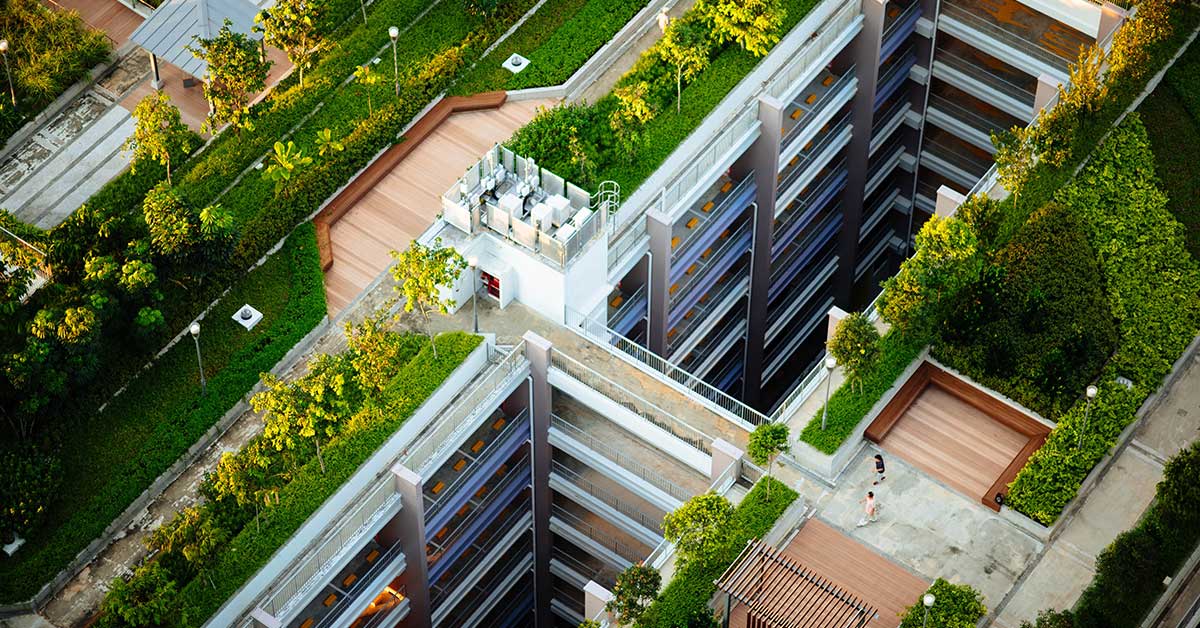
Stormwater runoff in undeveloped rural areas isn’t a big issue because the ground acts as a natural filter, absorbing rainwater and snowmelt.
Urban, and even suburban, areas are a different story. Buildings, parking lots, sidewalks, roads, and other hard surfaces can’t absorb that water, so right into the storm drain it goes.
All that stormwater—and the pollutants picked up along the way—goes directly from the storm drain into a water body or into the wastewater system. In addition, some cities have a combined sewer system, which means that the stormwater mixes with untreated sewage on its way to the treatment plant.
Any significant storm can result in three times the normal rate of waste and water, which can wreak havoc on a sewer treatment plant. It can take a month or more after a big storm to get the biologicals back under control so the plant can operate effectively again.
When the sewer system is overwhelmed, you end up with odor problems (best case) and often a dreaded overflow (worst case). That’s right—combined wastewater systems are designed to overflow directly into streams, rivers, and other water bodies. Unfortunately, just like the name implies, the overflow is a mix of stormwater and raw sewage. Even more unfortunate, these combined systems are pretty common in cities across the U.S.
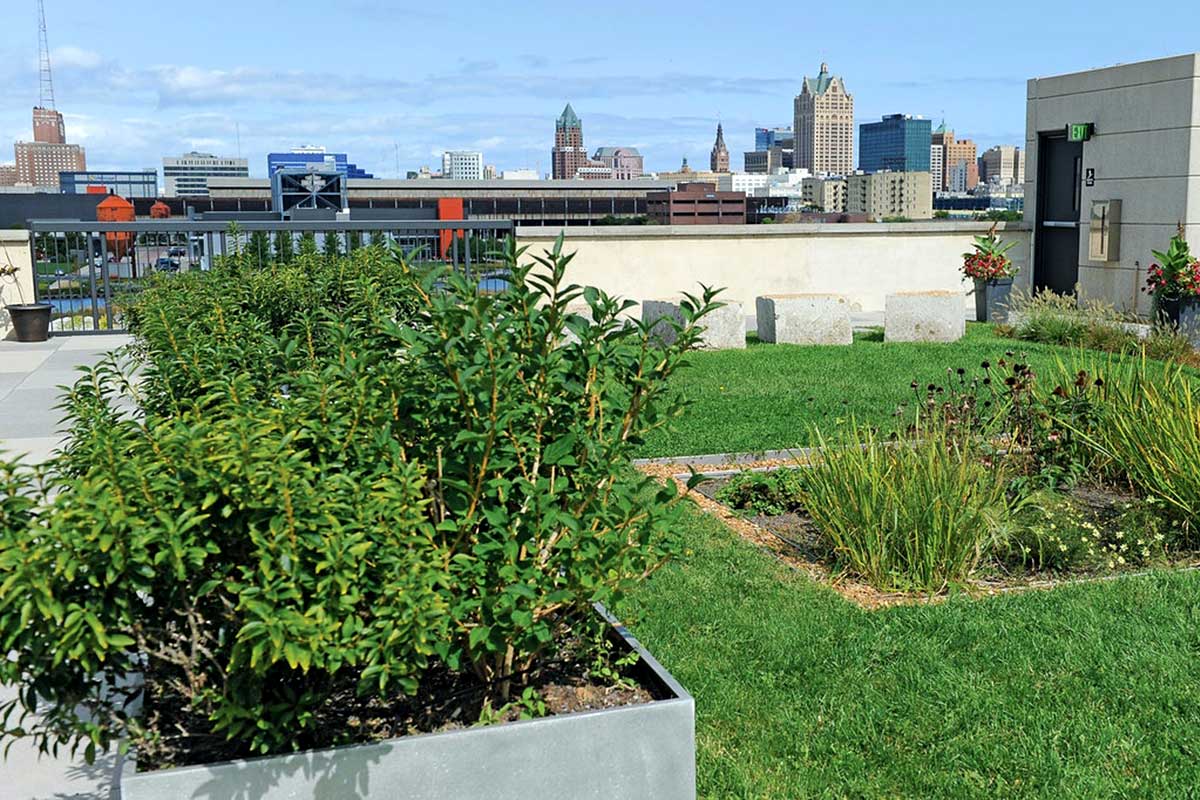
The Good News
Commercial building owners and developers can play a pivotal role in improving the health of our waterways by implementing green stormwater infrastructure (GSI) into their designs. GSI includes green roofs, tree plantings, rain gardens, permeable pavement, gray water collection systems, and so much more.
If you are wondering just how much of an impact you can really have, consider Milwaukee, Wis., which sits on the western shore of Lake Michigan. The city of Milwaukee credits forward-thinking industrial and commercial landowners with 9.1 million gallons of green infrastructure capture capacity!
Green stormwater infrastructure provides significant benefits to architects, designers, and commercial building owners. According to the Natural Resources Defense Council (NRDC), these include:
- Increased rents and property values
- Increased retail sales
- Energy savings
- Reduced infrastructure costs due to GSI credits and other financial incentives
- Reduced costs associated with flooding
- Reduced water bills
- Increased productivity in the office and improved overall mental health for employees
- Reduced crime
Examples of Green Stormwater Infrastructure
There are many ways commercial builders and building owners can incorporate green stormwater infrastructure into their designs. Not only do they provide the benefits mentioned above, they’re also a beautiful addition to the landscape.
Green Roofs
Green roofs are an excellent opportunity to reduce your stormwater runoff, a subject we discussed in a previous blog post. Considering the high impermeable square footage of most development projects’ roofs, implementing green infrastructure here can balance out other large impermeable areas, such as parking lots.
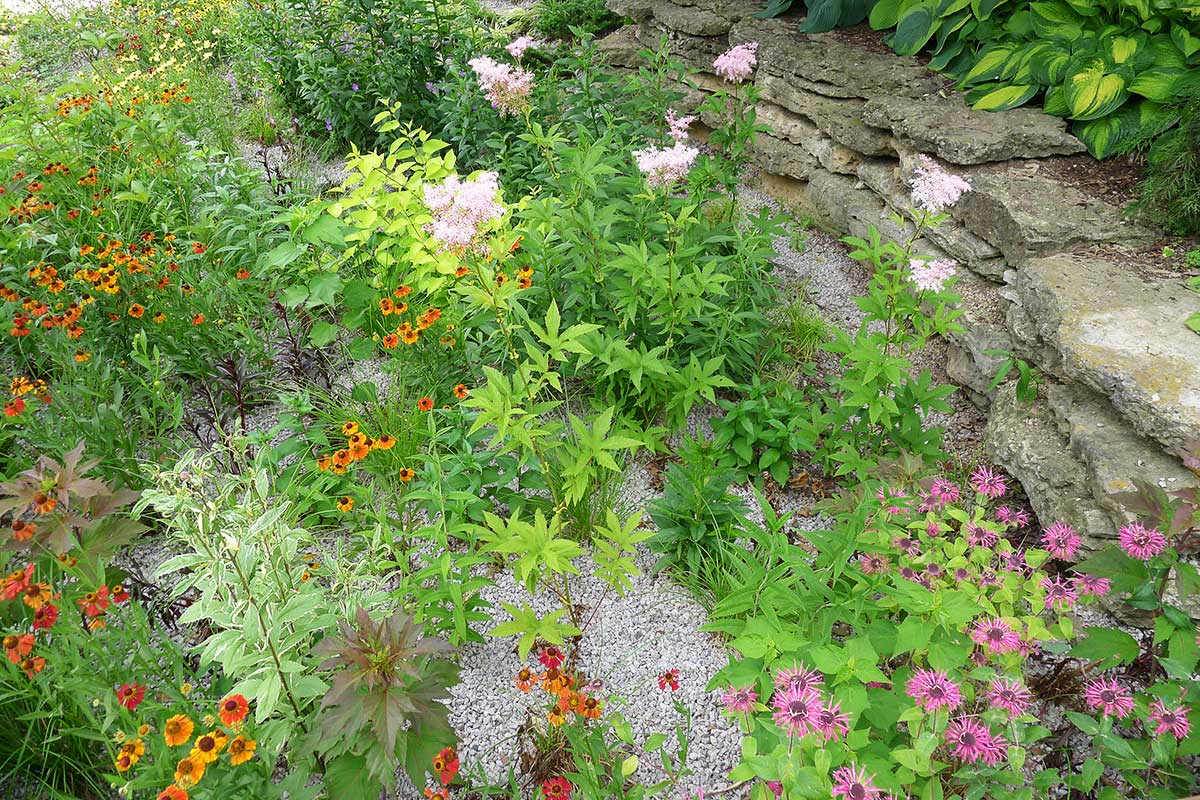
Tree Plantings, Rain Gardens & Stormwater Planters
According to the USDA Forest Service, a healthy 100-foot-tall tree can take 11,000 gallons of water from the soil and release it into the air again, as oxygen and water vapor, in a single growing season.
A commonly used formula to determine a tree’s capacity to take in water is based on the size of the tree—specifically, the diameter of the trunk. Generally, a tree can “drink” 10 gallons of water per week for every one inch of diameter, so a tree with a six-inch diameter can be expected to consume and divert about 60 gallons of water per week.
Rain gardens are another great way to let nature drink up excess stormwater. These gardens are planted in low or depressed areas, encouraging the rainwater to run down into them. Planted with native plants and perennials, they are an excellent way to capture stormwater in a useful and productive way.
However, planting a rain garden or stormwater planter is more involved than planting a few pansies in the ground and covering it with mulch. For this job, you will want to talk to a landscape architect to make sure you are collecting the water and filtering it correctly for the amount of rainfall common to your area.
Stormwater planters typically have a base of stone under the soil to store stormwater that filters down. Nearby curb cuts or trench drains direct stormwater from the sidewalk, parking lot, or street into the planter. In addition, there is often a green inlet that carries water to a domed riser, which distributes stormwater throughout the planter.
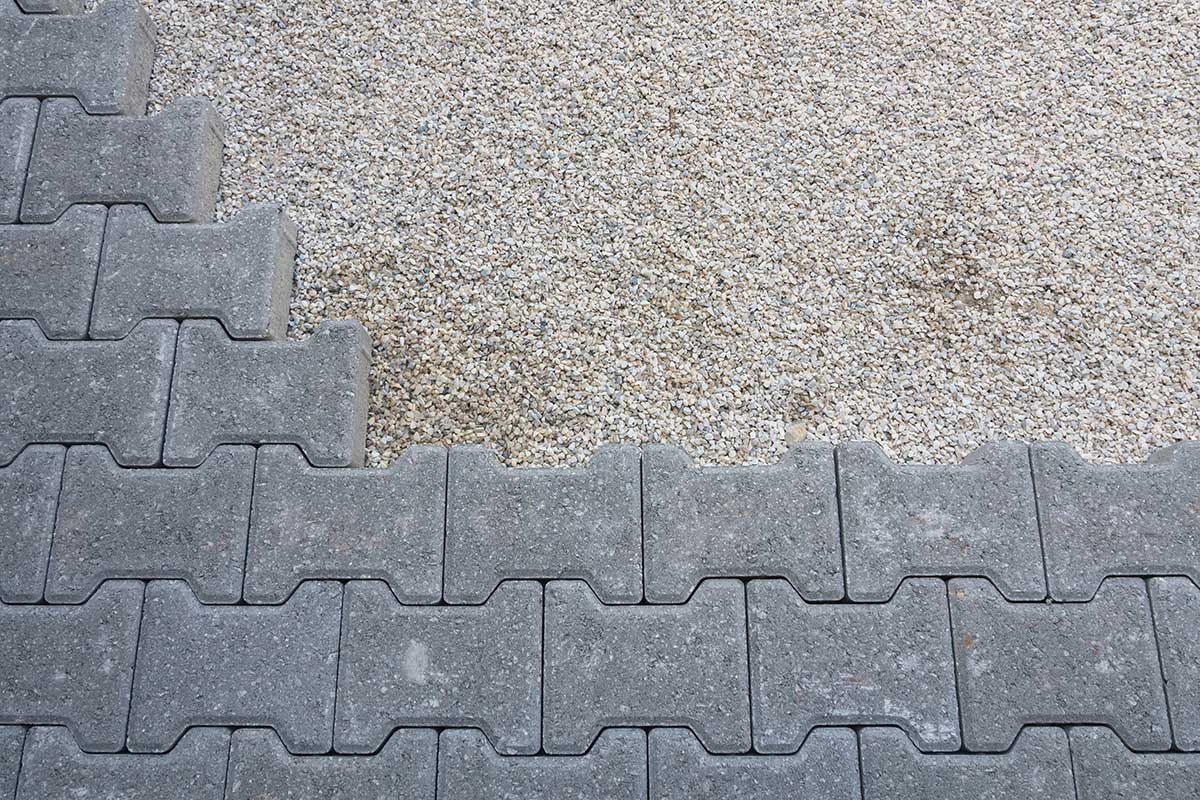
Permeable Pavement
Permeable asphalt and concrete, which look like their traditional counterparts, will suck up rainwater and melting snow like a sponge—although perhaps not quite as quickly. And because there’s less pooling and freezing, these materials reduce the need for road salt. They also minimize installation of conventional drainage, lowering construction costs. In addition to modified asphalt and concrete, there are many attractive permeable interlocking pavers and plastic grid pavers for walkways.
Rainwater Collection & Gray Water Irrigation
Drinking water is becoming scarce in many parts of the U.S. and around the world. It is enough of a problem that some communities are mandating gray water irrigation systems in new construction projects.
For example, in Tucson, Ariz., an ordinance requires rainwater harvesting plans and capturing systems for any new commercial building. The ordinance also requires that new homes be plumbed for gray water irrigation systems. This means having a drain for sinks, showers, bathtubs, and washing machines that is separate from drains for all other plumbing to allow for future installation of a gray water system.
Green Stormwater Infrastructure & Your Bottom Line
Not only is green stormwater infrastructure beautiful and healthy for our environment, but it can also have a significant impact on your bottom line. For example, the NRDC says that by adding a green roof, planting some trees, and installing a few rain gardens, a 34,000 square foot apartment building sees $1,740,000 in benefits over a 40-year period.
Because stormwater is a significant issue in just about every city and town across the country, your municipality likely has mitigation requirements for new construction and for properties undergoing renovations. In addition, there may be incentives, grants, and low-interest loans for green infrastructure improvements.
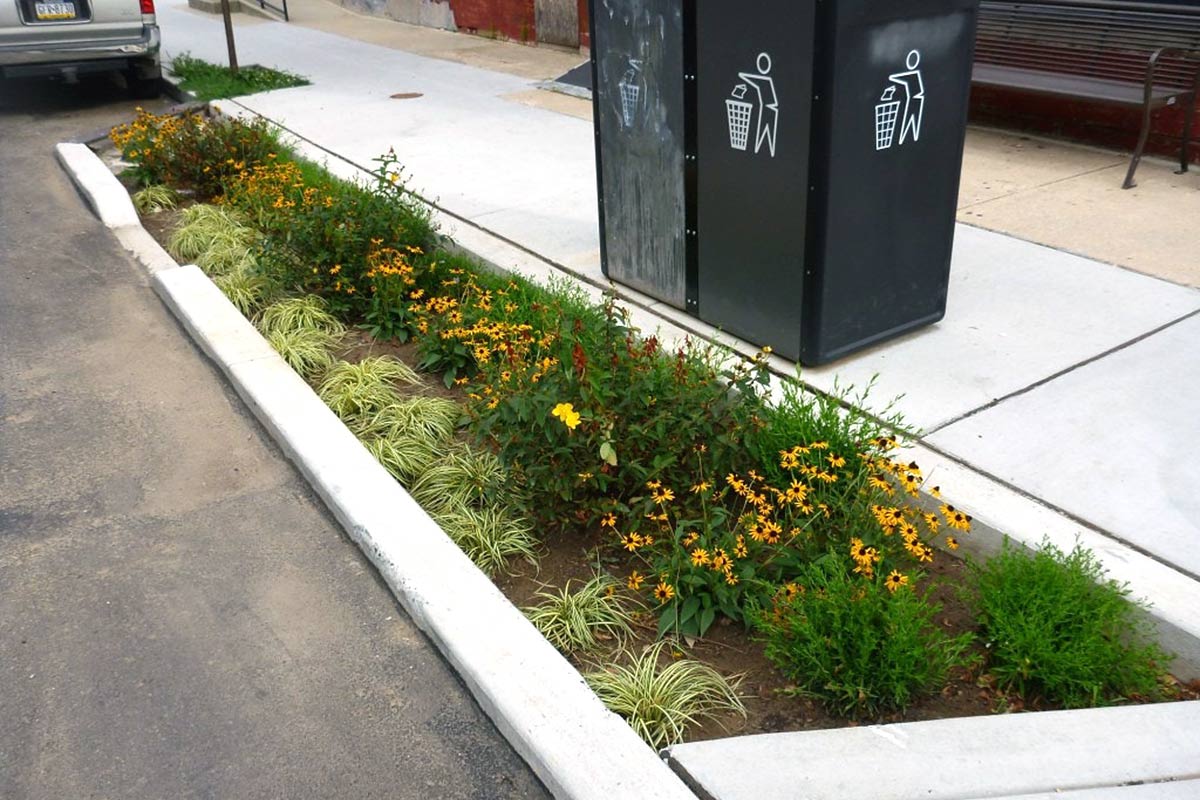
For example, in Philadelphia, where there is a centuries-old combined sewer system, they offer plenty of incentives to commercial property owners. The Philadelphia Water Department (PWD) created a Parcel Based Billing so that large private, non-residential customers can earn credits in the stormwater portion of their bill for retrofitting their properties with stormwater management infrastructure. That’s one carrot; the other comes in the form of grants.
The PWD partners with the Philadelphia Industrial Development Corporation (PIDC) to award $25 million annually in grants which can cover up to 100% of the cost to design and construct stormwater retrofit projects on non-residential properties. Then there is the stick.
The PWD’s Stormwater Regulations, which apply to new development, redevelopment, and demolition, requires the inclusion of stormwater management. If you want to break ground, your project must meet these regulations, including slowing infiltration of water or holding the stormwater until the system can handle it. Not complying will slow your project down significantly.
We encourage you to talk to your local municipality to see what resources are available—there are probably quite a few!—to help you add GSI to your existing building or new construction. While you’re at it, why not add a rain garden or rain barrel to your home?
If you want to know more about proper drainage for your green stormwater infrastructure project, please get in touch with one of our engineers.
